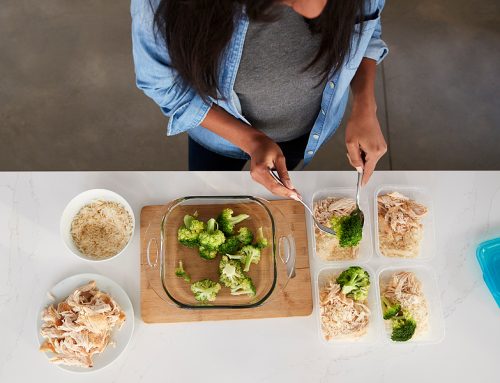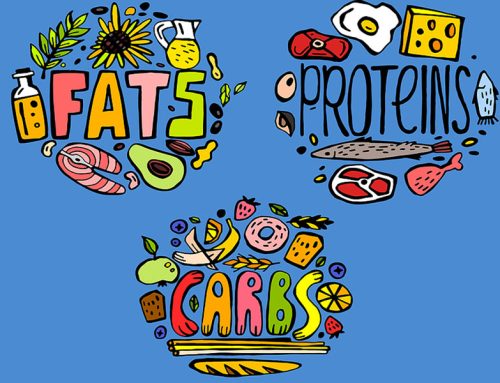 Did you know that nearly 80% of people who lose weight end up gaining it all back within one year? (Source: American Journal of Clinical Nutrition)
Did you know that nearly 80% of people who lose weight end up gaining it all back within one year? (Source: American Journal of Clinical Nutrition)
It’s not because they’re lazy. It’s not because they choose to be overweight. And it’s definitely not because they lack willpower.
After more than three decades in the fitness world, and after coaching thousands of people, I started to understand the real problem.
One of the most consistent patterns is this:
People try to follow diets that are way too rigid… and they eventually crack.
They’re told to ban carbs, avoid ALL sugar, stick to “clean” food lists, or follow some one-size-fits-all plan they found online or bought from a coach or “influencer.”
At first, it works. They lose weight. But then they start feeling deprived. They miss the foods they enjoy. One slip-up leads to another, and before they know it, they’re back where they started (or worse).
The truth is, you need structure to succeed – like what you get when you follow a meal plan – but it’s structure plus flexibility that’s the real secret to lasting results.
This isn’t just theory. Research supports it. Thousands of people have proven it. And I’ve seen it in my own life too.
At 56 years old, I’m just as lean as I was in my 20s and 30s. The difference is, I don’t follow the rigid, hardcore bodybuilder-style plans I used to. It’s not egg whites, chicken and broccoli six times a day anymore.
Now I include all the foods I enjoy – in measured moderation. I also look forward to my meals every single day, because I’ve learned how to cook, prep, and plan with flexibility.
It’s not just sustainable – it’s enjoyable. And that’s why it works, not just for losing fat, but for keeping it off long-term.
A flexible plan means there are no forbidden foods. It’s a fact that you can eat anything you want if you simply make it fit your calories and macros.
A customized plan means it’s designed for your lifestyle, your schedule, and your preferences.
When a plan is customized and flexible, everything changes. You feel more in control. You stop obsessing. And even when you’re dieting in a deficit for fat loss, it becomes something you can stick with.
But there’s a big problem in the diet world today.
A lot of people think they know what meal planning is. They’ve heard the term, and they’ve already decided it’s not for them. When that happens, they miss out on all the benefits of having a structured daily plan.
Other people keep falling back on rigid, cookie-cutter meal plans. But in the long run, that’s even worse than having no plan at all.
Here’s what happens:
You get more frustrated with all the food rules. You miss your favorite foods, so you start “cheating” or bingeing. Then you feel like a failure, even though it was the plan itself that failed you.
Over time, fat loss gets harder, not easier. And if you’re not careful, you wake up five years older, 15 pounds heavier, and more confused than ever, because you’ve been trying so hard, but nothing seems to stick.
That’s why it’s so important to call out and bust the most common myths about meal planning – because these myths might be the very reason you’re stuck, even though you’re doing your best.
Or, these myths might be the reason you’ve never given meal planning a real shot in the first place.
Read through my list and you might find yourself more convinced than ever that a meal plan – the right kind – could be the one of the most effective fat loss strategies you could use.
8 Common Myths About Meal Planning (That Might Be Keeping You Stuck)
MYTH 1: Meal Planning Is Too Hard
Planning meals based on macros might sound overwhelming, but it’s simple once you have a system. In fact, with good apps or software, many people can create full meal plans in minutes. There are even ways to do the nutrition math just once, and then choose whether you want to keep tracking the numbers or not.
And here’s the kicker: you can eventually transition away from tracking altogether into habit-based, instinctive, and mindful eating. You’ll have structure, without needing to obsess over every bite.
MYTH 2: You Can’t Be Spontaneous If You Plan Meals
Rigid meal plans don’t allow for spontaneity. But flexible ones do. With the right approach, you can make last-minute food choices and still stay on track. You could pick your dinner on the fly every night, but you’ll still have structure and a plan for doing it.
MYTH 3: Meal Plans Are Boring
Some people get bored eating the same meals on repeat. But you don’t have to. You can build as many plans as you want. And when you use a good food exchange system, you unlock endless variety – and your macros will still be close to your targets even if you don’t crunch the numbers from scratch again.
MYTH 4: Meal Planning Doesn’t Allow Flexibility
I think we’ve already busted this myth, but let’s drive a nail in the coffin: A rigid meal plan dictated to you by some “expert” doesn’t allow you flexibility. But a meal plan you create for yourself, where you get to choose almost every meal plan variable, is almost completely flexible. And even after you’ve chosen your own plan, you can change almost any part of it in the future.
MYTH 5: Meal Planning Is Too Restrictive
It’s true that cookie-cutter diets can feel restrictive. But when you plan your meals based on your own food choices, it doesn’t feel like restriction – it feels like freedom. Especially when you learn that 10–20% of your calories can be allocated for any treats you want, and you’ll still make progress.
MYTH 6: Meal Planning Leads to Black-or-White Thinking
Following a cookie-cutter meal plan, or a diet with a long list of strict rules can lead to dichotomous thinking, and that does correlate with diet failure and eating disorders. But when you’re a flexible meal planner, this makes you a good critical thinker and helps you avoid disordered eating and food obsession.
MYTH 7: Meal Plans Don’t Build Good Habits
Actually, following a meal plan is one of the best pathways for building good habits. After following a meal plan for as little as two or three months, your new eating behaviors are already turning into habits. At this point, following a meal plan and tracking macros becomes optional and you can fall back on your new habits and mindful eating to guide you.
MYTH 8: Hiring a Coach to Write Your Plan Is the Best Way
Hiring a coach is a good idea only if the coach creates a customized and flexible meal plan for you. If the coach sells you a cookie-cutter plan, prescribes rigid rules, or pushes one eating philosophy dogmatically, it might be the worst way.
Final Thought
If you’ve ever felt stuck, frustrated, or exhausted trying to follow someone else’s plan – it’s not your fault.
The old way of meal planning is broken.
But if you reject all the myths and follow the new, modern way of meal planning, which combines structure with flexibility, it feels liberataing and freeing.
And the best part is, you’ll get un-stuck, start losing fat again, and increase your odds of keeping it off for good.
==> Continue reading: A deeper look at meal planning and why flexibility makes all the difference
-Tom Venuto, Author of:
Burn the Fat, Feed the Muscle
Burn the Fat Guide To Flexible Meal Planning For Fat Loss
www.BurnTheFat.com





Hi Tom
I wonder have you experimented using AI for meal planning or anything else related to the topics in your blog for that matter, like creating an exercise program or checking what foods to drop or not going forward?
Perhaps this could be something to write in a future blog post; whether AI (ChatGPT, Gemini, Grok, etc) look like a helpful assistant and a reliable instructor or something that’s giving at best questionable advice?
Thanks!
Funny you ask. We already have meal planning software at burn the fat inner circle and it’s awesome, and it has aged well too. its really good. but… I’ve also been looking into doing custom Chat GPT for our inner circle based on feeding the AI my entire life’s work – all my books, all of the thousands of articles. “Chat Burn the Fat” has a good ring to it yes?
This sounds awesome! I’ve been postponing joining the inner circle (far too long) with the usual excuses but a tested AI assistant familiar with all your work might finally “force” me join! Definitely share an update in the blog if you make some progress with this.
Of course, AI could be hugely impactful in general as well if AI could provide at least somewhat tailored advice for people feeling miserable because they don’t know where to start, whom to trust, what to do in their particular situation, and so forth. Even if it would be just a percent or two of the population who’d be encouraged to start and stay on the right track that’d be huge.
PS. I’d name it FatBurnGPT :-)
ChatBTF?